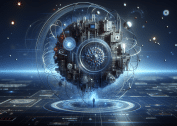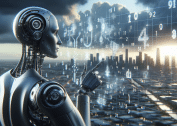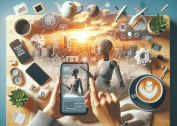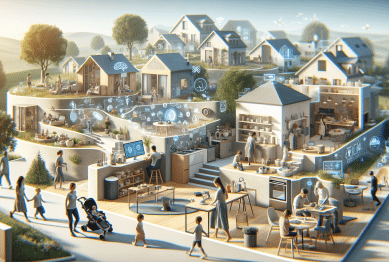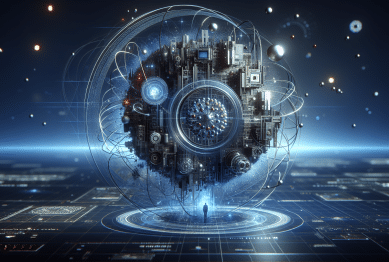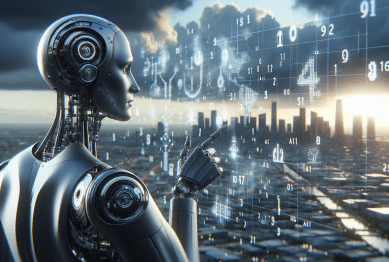Artificial intelligence is transforming the technology landscape in ways that surprise many people. This article explores how AI shapes devices, security, jobs, and personal experience—using real-world examples, scientific research, and practical insights for readers eager to understand today’s technological revolution.
The Invisible AI Revolution in Consumer Devices
Artificial intelligence quietly shapes the technology that surrounds daily life. From the moment a smartphone wakes on facial recognition to a smart assistant answering a question, AI algorithms are constantly at work. These invisible processes support predictive text, photo enhancement, and even the curation of news feeds. It’s not just about robots or futuristic labs—AI is already here, embedded in devices that millions use without always realizing its presence. The practical benefits can include improved productivity, better security, and more personalized experiences as manufacturers invest in the latest AI-powered features to keep pace with fast-changing user expectations.
One area seeing rapid evolution is smart home technology. Devices like thermostats learn user patterns, adjusting temperature automatically for comfort and efficiency. Security cameras use AI to distinguish between animals and humans, minimizing false alarms. Entertainment systems, from TVs to speakers, deploy AI to build viewing or listening habits over time, enriching leisure activities effortlessly. This cutting-edge technology is not only about convenience but also about helping people live safer and more efficient lives. Interest in smart device adoption continues to surge, as consumers appreciate the flexibility and control modern AI makes available—sometimes with just a few taps or voice commands.
While some might picture artificial intelligence as far-removed from typical routines, its impact is tangible and immediate. Simple queries like asking for the weather, dictating messages, or shopping hands-free rely on advanced AI processing natural language in real-time. Even budgeting apps now use AI to suggest savings plans based on spending patterns. The combination of accessible device integration and complex machine learning is redefining expectations for what daily technology should deliver, with innovators continually pushing these boundaries further. This helps ensure technology remains relevant, efficient, and user-friendly in a world moving faster each year.
Smart Security: How AI-Driven Protection Works
Cyber threats grow alongside technological advancements, and AI-driven security answers the call in dynamic ways. Many current antivirus programs use machine learning to spot suspicious activity on devices long before the average user notices. By analyzing millions of data points, AI systems detect threats that a purely signature-based model would miss. The advantage? Enhanced real-time protection against new types of malware or phishing attacks, especially on smartphones and laptops that store sensitive personal information. With every security scan, these programs learn, getting smarter over time and helping technology users navigate the digital landscape more safely.
Physical security also receives a significant upgrade from artificial intelligence. Modern doorbell cameras and surveillance systems use image recognition to analyze who approaches, sending tailored notifications and automating responses. Smart locks can identify trusted users, while automatically locking up after sensing unusual or unfamiliar patterns. These innovations don’t only help thwart break-ins—they encourage greater peace of mind, especially for those concerned about protecting home and family. AI’s capability to distinguish between routine movement and a potential risk means fewer false alarms and less stress for consumers who depend on these technologies.
As the internet of things expands, interconnected security systems gain greater reach and complexity. AI orchestrates these devices—integrating cameras, alarms, lights, and even voice assistants—into cohesive networks. This synergistic effect makes protection more responsive and personalized. It is now common for AI-powered platforms to learn daily routines, adapting security measures while maintaining homeowner privacy. By creating a proactive barrier, artificial intelligence gives end users a hands-off approach to defense, while continual updates from major providers ensure these systems evolve with emerging risks. Across residential, commercial, and institutional spheres, the value of AI-enhanced protection is becoming increasingly hard to ignore.
The Expanding Role of AI in Health Tech
Artificial intelligence powers a quiet revolution in healthcare technology. Wearable devices now track heart rate, sleep patterns, and physical activity, interpreting these metrics to offer personalized recommendations. Some even detect irregular heart rhythms or flag warning signs before users feel symptoms, leveraging machine learning that draws upon vast medical datasets. This early intervention capability can be critical in conditions like sleep apnea or atrial fibrillation, offering peace of mind and improving quality of life for millions who want proactive, data-driven wellness support on their wrists.
Telehealth platforms increasingly integrate AI algorithms to support both patients and providers. Chatbots triage questions, schedule appointments, and even provide reminders about medication. In remote consultations, AI assists with diagnosis by processing symptoms, comparing medical histories, and suggesting next steps for care. These advances accelerate access to reliable information while allowing medical professionals to spend more time on complex patient needs. Plus, by automating many routine tasks, AI helps streamline healthcare delivery, reducing wait times and making healthcare more accessible for people in underserved areas.
Even large-scale medical research is transformed by artificial intelligence. AI systems analyze massive volumes of patient records and trial data to uncover patterns and predict outcomes more accurately than human teams alone. This leads to new treatment approaches and medication development, often at a much faster rate. As more healthcare providers adopt these tools and collaborate across sectors, patient care and innovation are expected to grow in parallel, ensuring the promise of smarter, safer, and more efficient health services for years to come.
Machine Learning, Jobs, and the Future of Work
Discussion about AI and employment is often heated, but the reality is nuanced. While machine learning automates specific repetitive tasks, it also creates new fields and career opportunities. Technologies that process large amounts of data or automate customer interactions require skilled oversight—think of AI and data scientists, machine learning engineers, or product managers focused on ethical technology design. Educational resources and training programs respond to demand, helping professionals learn about responsible AI development and master emerging tools. This push towards digital literacy is opening doors across a range of industries.
AI-driven automation allows businesses to focus human effort on work that requires creativity, empathy, or judgment—qualities that machines haven’t mastered. In banking, for example, chatbots answer routine inquiries, but complex financial planning remains a task for human advisors. In manufacturing, robots assemble components, but skilled technicians maintain and hone these smart systems. By embracing the evolving partnership between people and AI, organizations unlock efficiencies while also fostering more interesting and fulfilling careers. The rise of hybrid teams, blending technology expertise and soft skills, is quickly becoming a modern workforce hallmark.
Challenges remain. Concerns about job displacement, bias in algorithms, and data privacy are real, and require careful, transparent policy discussions. Many experts advocate collaboration between business, government, and educators to responsibly shape the future workforce. As more sectors integrate machine learning, ongoing investment in upskilling is essential to ensure workers remain adaptable and capable. The evolution is underway: industries that harness AI thoughtfully will likely see not just productivity gains, but also stronger, more forward-looking teams benefiting from technology’s full potential.
Artificial Intelligence, Privacy, and Ethics
Artificial intelligence raises new questions about personal privacy and ethics. Devices collecting voice, image, or biometric data must safeguard information with robust security protocols. Data anonymization, encryption, and user consent have become pillars of responsible AI development. As governments and international organizations formulate privacy standards, companies are increasingly transparent about AI practices. Users now expect clear explanations of how their information is gathered, stored, and processed. This driven push for ethical guidelines aims to balance innovation with respect for individual rights and global norms.
Algorithmic transparency receives particular attention. People want to know not just that decisions are made, but how. Advances in explainable AI—a field focused on making machine learning outcomes interpretable for humans—offer promising solutions. Whether it’s a lending decision or a recommendation in a healthcare app, understanding the “why” behind an outcome empowers users. It also reduces potential for bias or discrimination, creating fairer and more equitable uses of rapidly evolving technologies. As these issues grow more complex, international frameworks and interdisciplinary collaborations will only become more important.
Ethical AI feeds back into trust and adoption. When individuals are confident in how artificial intelligence processes their data or assists in daily tasks, uptake grows organically. Numerous nonprofit organizations and think tanks contribute to these conversations, involving both public feedback and expert review. Over time, expected guidelines and best practices will likely continue to evolve, reflecting shifting societal expectations. In the future, a focus on privacy and ethics could become an industry differentiator, driving positive competition alongside technical innovation.
A Glimpse into Tomorrow’s Everyday AI
The evolution of artificial intelligence shows no signs of slowing. Experts predict AI in everyday tech will become even more adaptive and personalized, with devices not only anticipating needs but collaborating seamlessly with each other. In the smart home, expect new synergy between kitchen appliances, energy management systems, and health trackers—each enhancing life in ways previously imagined only in science fiction. As connectivity improves and new sensors are adopted, the possibilities for daily life continue to expand, with AI shifting from support role to silent partner in almost every interaction.
Personalization will drive much of this transformation. AI will adjust device settings and recommendations in real time, based on changing user, household, or even environmental conditions. Travel plans will be optimized for health, safety, and sustainability. Educational tools will adapt to multiple learning styles at home or in classrooms, offering custom pathways that help unlock potential. These integrated systems will advance accessibility, providing tailored interfaces that help individuals with disabilities live more independently. As machine learning becomes more nuanced, technology will meet people exactly where they are.
It’s clear that embracing artificial intelligence means adapting to new ways of thinking about technology, privacy, and responsibility. While some aspects remain speculative, the steady drumbeat of scientific progress points to years ahead filled with experimentation and opportunity. For those willing to engage and learn, the AI-powered future is one of collaboration, curiosity, and imagination—ushering in a world where technology feels less like a tool and more like an extension of the self.
References
1. Stanford University. (2023). Artificial Intelligence Index Report. Retrieved from https://aiindex.stanford.edu/report/
2. National Institute of Standards and Technology. (2022). NIST Privacy Framework: A Tool for Improving Privacy through Enterprise Risk Management. Retrieved from https://www.nist.gov/privacy-framework
3. World Health Organization. (2022). Ethics and Governance of Artificial Intelligence for Health. Retrieved from https://www.who.int/publications/i/item/9789240029200
4. Brookings Institution. (2021). Artificial Intelligence and the Future of Work. Retrieved from https://www.brookings.edu/research/artificial-intelligence-and-the-future-of-work/
5. European Commission. (2023). Ethics Guidelines for Trustworthy AI. Retrieved from https://digital-strategy.ec.europa.eu/en/library/ethics-guidelines-trustworthy-ai
6. Harvard Medical School. (2023). Artificial Intelligence in Health Care. Retrieved from https://www.health.harvard.edu/blog/artificial-intelligence-in-health-care-202301052875



